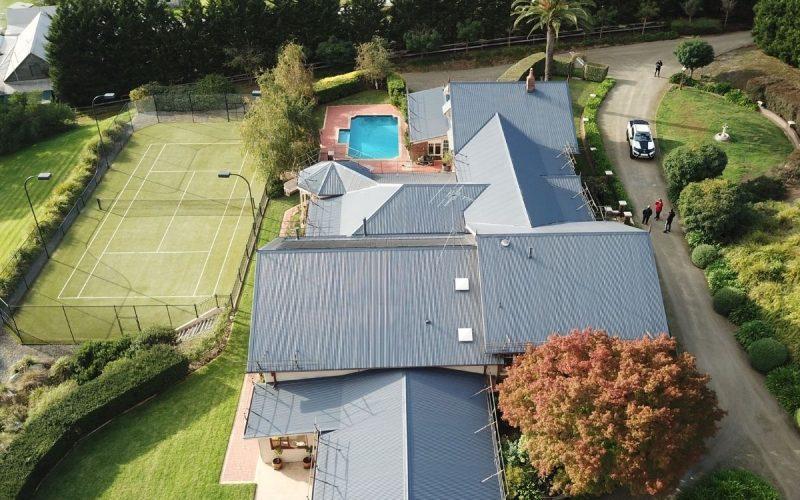
Choosing the right colour for your roof can be a difficult process. This is because when you paint your roof, it will be on display for many years to come. A bad decision now could mean spending thousands of dollars more in the future to repaint your home’s exterior. You can also consider the colour of the surrounding homes, ensuring that your house stands out without being too flashy.
Warm colours like brown or red can be good options for homes in colder climates. They tend to reflect heat better than other colours, helping to keep your home warm during the winter. Darker colours like green, blue and grey are ideal for warmer climates because they help keep the sun out and heat in.
Some homeowners choose to paint their roofs white, but this can lead to problems down the road due to weather and dirt build-up. It’s also important to ensure that your roof matches the colour of your trim so you don’t end up with a large contrast between colours on your home.
Your best bet is to find a reputable contractor who will work with you to choose the right colour for your home. Be sure to choose a company that provides free quotes and offers different options based on price point and quality, so you can get something you love without breaking the bank.
Here are some of the suggestions from Melbourne’s roofing experts.
Roof Material
Roof tiles are available in various colours that can add architectural interest to your home’s exterior. Clay and terracotta tiles lend warm hues to a house’s roofline, while slate has been used for centuries for its rich palette of earthy hues that range from deep mahogany to pale grey-blue. A copper roof offers either a warm glow or an icy tone depending on the finish you choose.
Terracotta and clay tiles tend to be used on low-slope roofs (1/12 pitch or less). They are typically installed with traditional wood or steel lath nailed directly to wood rafters.
Architectural Style
If you’ve ever wondered how to choose colours for your home, the first thing to do is consider your house’s style. Most architectural styles work well with a wide range of colour schemes. Specific colour palettes, on the other hand, complement certain architectural designs.
Permanent Components
If your property includes permanent components, such as brick or stone exteriors or conspicuous landscape elements, you should take these into account when selecting a residential roofing colour. This is because these components will most likely outlast the roof; making them work together is the most practical approach. This also applies to new components with a lifespan comparable to the roof, such as fibre cement siding put within the last year.
Place’s Climate
Dark colours tend to absorb more heat, which makes your attic hotter and increases the amount of air conditioning you need to run to keep your home cool.
Light-coloured roofing material is more expensive up front, but the savings you’ll make in energy costs can give it a quick return on investment (ROI).
If you’re considering installing, re-colouring or installing a new roof, take the advice of roof restoration experts who can state the benefits of choosing a particular colour for your roof.
Conclusion
Roofs are the top of your home and can be a major part of your home’s curb appeal, so they should blend in with the rest of your house.
A bright colour or bold pattern may seem like a good idea when you’re picking out a new roof, but these aren’t always the best choice. A roof with interesting colours or patterns can clash with the rest of your house, making your home seem unbalanced. This can make anyone looking at your home feel uncomfortable. A bland colour will make any style of housework better together and blend naturally with the landscape around it.
Consider choosing a hue for your roof that will enhance your home’s beauty while also contributing to your comfort. If you want to add some drama to your design, opt for fun Colorbond colours that are appropriate for each season. If you want to play it safe, choose something more calming and neutral in colour, so the roof becomes part of the background instead of being a focal point.
If you aren’t sure how to go about it, get in touch with roof restoration experts.





